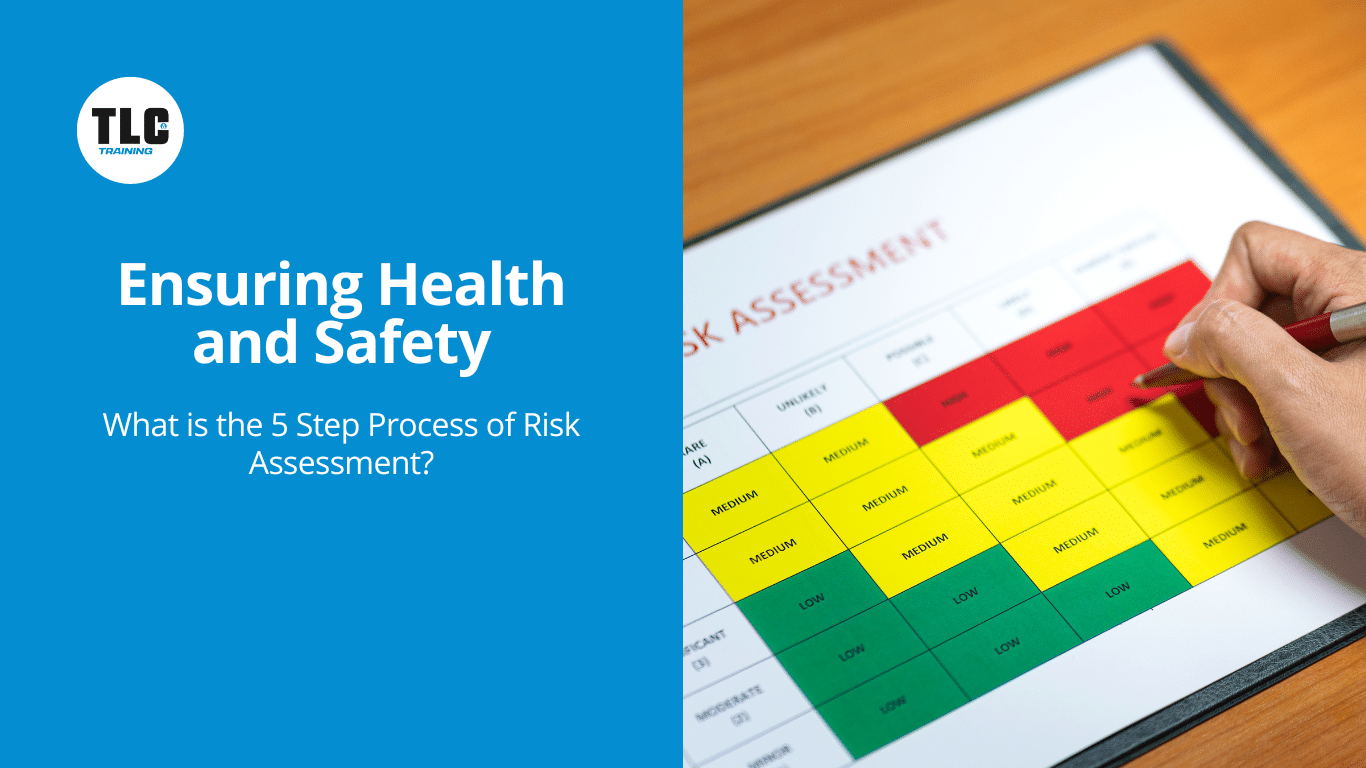Risk assessment is a critical aspect of any business or project. It involves identifying potential hazards, analysing, or evaluating the risk associated with that hazard, and determining appropriate ways to eliminate or control the hazard. In essence, it’s about understanding what could go wrong, how likely it is to happen, what potential consequences could be and what measures should be taken to prevent or manage the risk. This article will guide you through the five-step process of risk assessment.
Risk Assessment in 5 Steps
Step 1: Identify the Hazards
The first step in any risk assessment process is identifying potential hazards. These are anything that may cause harm, such as chemicals, electricity, working from ladders, an open drawer etc. The best way to identify hazards is by conducting a thorough inspection of the workplace or project site.
Consider all activities, processes, materials, equipment, and environment that could potentially cause harm. It’s also important to consider non-routine activities such as maintenance work or changes in production cycles. Employee input can also be invaluable as they might have first-hand knowledge of what could go wrong.
Step 2: Determine Who Might Be Harmed and How
Once you’ve identified potential hazards, the next step is to determine who might be harmed and how they might be affected. This includes employees directly involved in your operations as well as people who might not be directly involved but could still be affected such as visitors or contractors.
Consider how individuals might be exposed to these hazards – Is it during a specific task? Is it due to being in a certain location at a certain time? Understanding this will help you determine how severe the risk might be and who exactly is at risk.
Step 3: Evaluate Risks and Decide on Precautions
After identifying potential hazards and determining who might be harmed and how, you need to evaluate these risks – That means understanding the likelihood of these hazards causing harm.
Risk evaluation often involves considering what controls are already in place and whether they are sufficient. It’s about deciding whether a hazard is high, medium, or low risk based on its potential consequences and the likelihood of it occurring. Once you’ve evaluated the risks, you can then decide on what precautions should be taken to prevent harm.
Step 4: Record Your Findings and Implement Them
The fourth step in the risk assessment process is recording your findings. Documenting your risk assessment process is crucial as it shows you have identified hazards, decided who could be harmed, and determined how to control the risks.
Your record should include details about the hazards identified, how people might be harmed by them, what you have in place to control the risks, and any further action you need to take to control them. Once this is done, it’s time to implement these measures.
Templates for risk assessments can be found at https://www.hse.gov.uk/simple-health-safety/risk/risk-assessment-template-and-examples.htm.
Step 5: Review Your Assessment and Update if Necessary
Risk assessment isn’t a one-time activity. As work environments change and evolve, so do potential hazards. That’s why it’s important to review your risk assessment regularly – at least once a year or whenever significant changes occur in your business that could lead to new hazards.
Risk assessment is an essential part of any safety management system. It helps businesses understand what could go wrong, determine appropriate ways to control these risks and prevent unnecessary accidents and incidents. By following this five-step process of risk assessment, businesses can ensure they are doing all they can to protect their employees and others from harm.
Remember that effective risk assessments require a thorough understanding of your business operations, involve all relevant stakeholders (including employees), are documented properly, and are reviewed regularly. With this approach, you’ll be well on your way towards creating a safer workplace for everyone involved.
